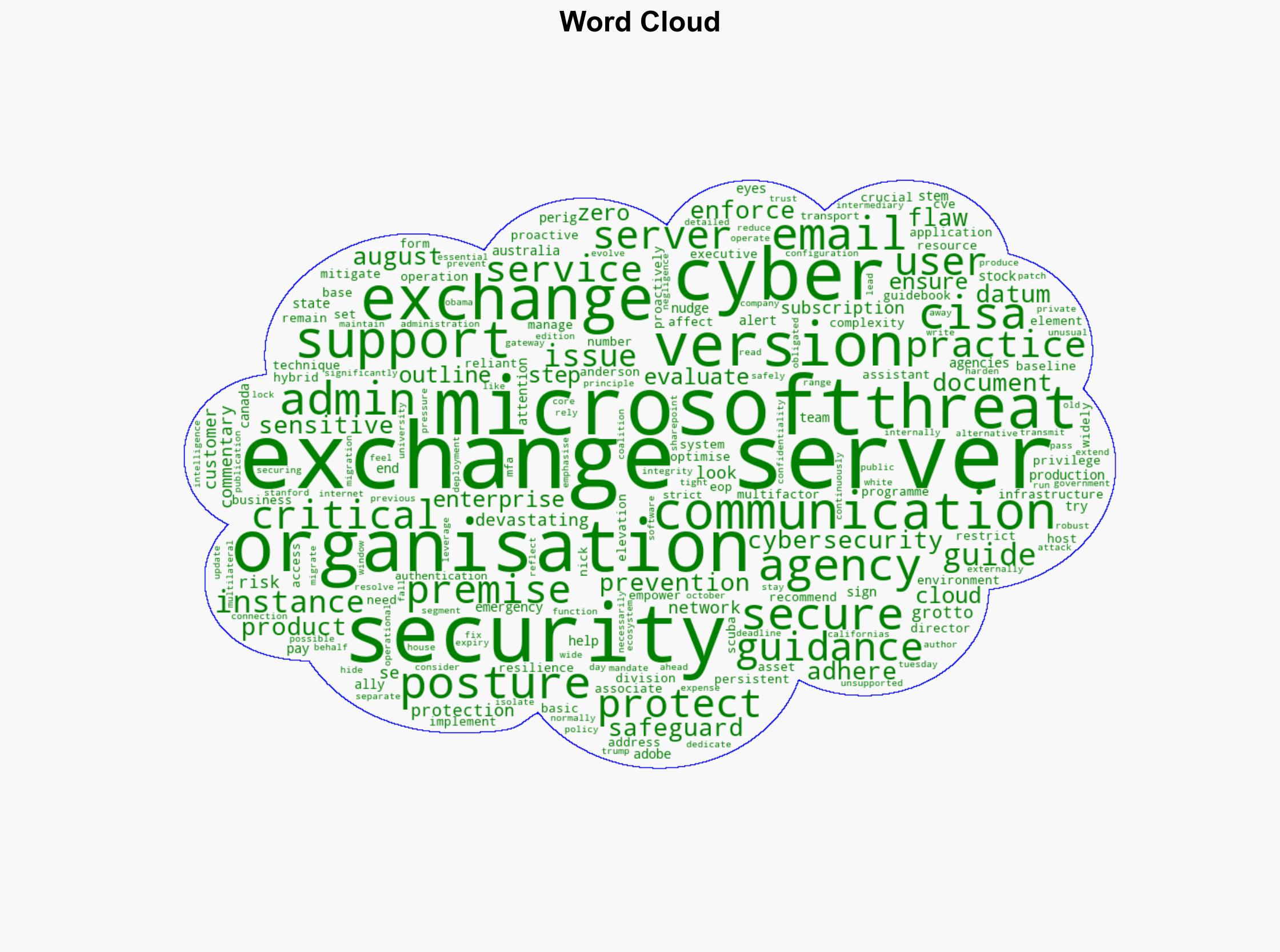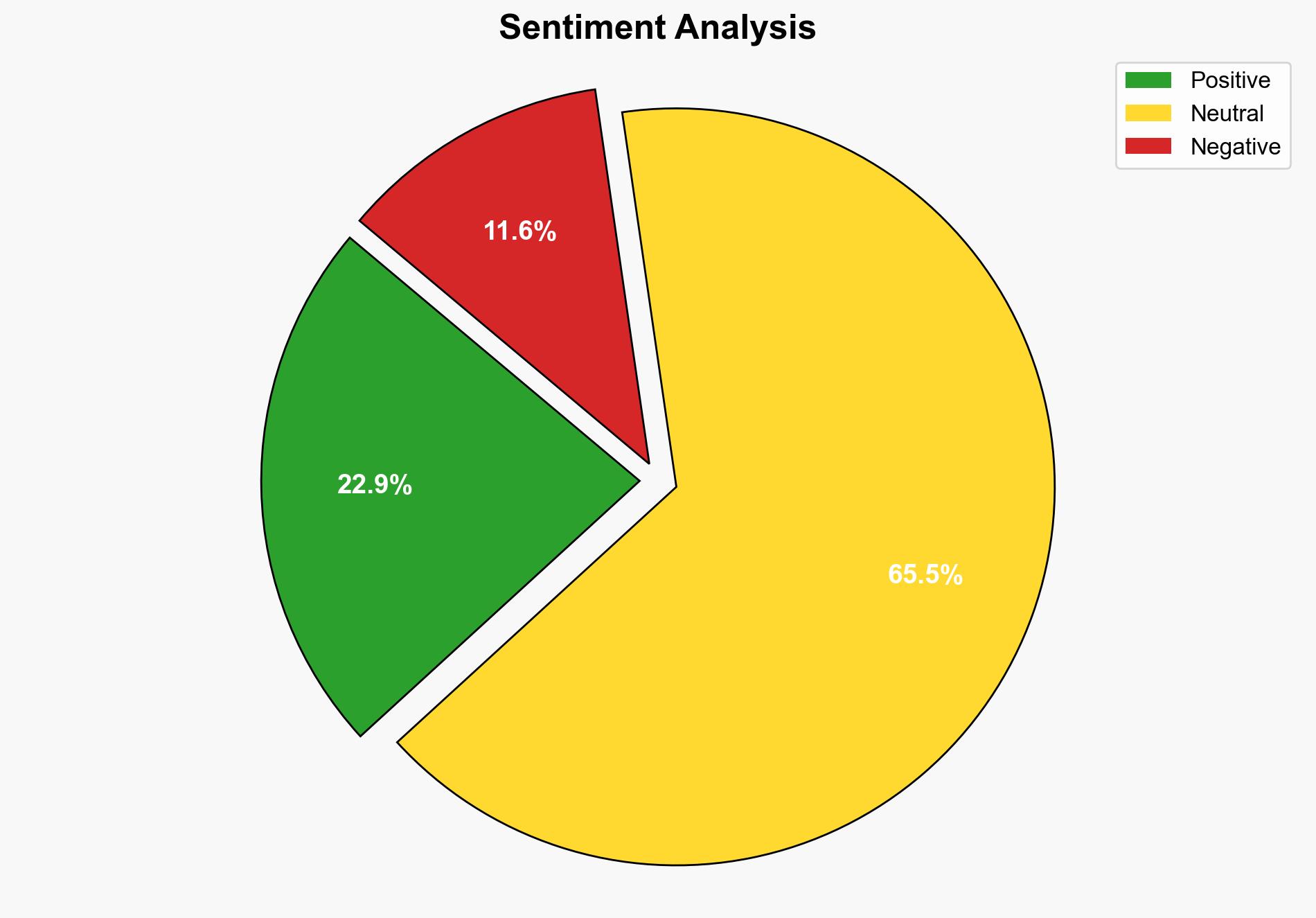Cyber agencies co-sign Exchange Server security guide – ComputerWeekly.com
Published on: 2025-10-31
Intelligence Report: Cyber agencies co-sign Exchange Server security guide – ComputerWeekly.com
1. BLUF (Bottom Line Up Front)
The most supported hypothesis is that the co-signed guidance by cyber agencies aims to mitigate vulnerabilities in Microsoft Exchange Server by promoting best practices and migration to secure alternatives. Confidence level: High. Recommended action: Organizations should prioritize the implementation of the guidance, consider migrating to supported versions or cloud-based services, and continuously evaluate their cybersecurity posture.
2. Competing Hypotheses
1. **Hypothesis A**: The guidance is primarily a proactive measure to enhance cybersecurity across organizations using Microsoft Exchange Server, driven by genuine concerns about persistent threats and vulnerabilities.
2. **Hypothesis B**: The guidance serves as a strategic maneuver by cyber agencies to pressure Microsoft into addressing security flaws more aggressively, potentially highlighting Microsoft’s perceived negligence in maintaining security standards.
Using ACH 2.0, Hypothesis A is better supported due to the detailed nature of the guidance and the emphasis on proactive security measures, which aligns with the agencies’ historical focus on prevention.
3. Key Assumptions and Red Flags
– **Assumptions**: Hypothesis A assumes that the guidance is purely for security enhancement without ulterior motives. Hypothesis B assumes that there is a strategic intent to influence Microsoft’s actions.
– **Red Flags**: The unusual step of issuing detailed guidance for a private company’s product could suggest underlying tensions or dissatisfaction with Microsoft’s security practices.
– **Blind Spots**: The potential impact of this guidance on Microsoft’s business strategy and customer relations is not fully explored.
4. Implications and Strategic Risks
The guidance could lead to increased migration to cloud-based services, impacting on-premise server markets. If Microsoft fails to address the highlighted vulnerabilities, it could face reputational damage and loss of customer trust. Geopolitically, this may influence how other nations perceive U.S. technology companies’ security standards.
5. Recommendations and Outlook
- Organizations should implement the recommended security measures and consider transitioning to supported or cloud-based solutions.
- Best Case: Organizations enhance their cybersecurity posture, reducing vulnerability to cyber threats.
- Worst Case: Failure to act on the guidance results in significant data breaches and operational disruptions.
- Most Likely: A gradual shift towards cloud-based services with improved security practices across organizations.
6. Key Individuals and Entities
Nick Anderson, CISA, Microsoft, Grotto (White House Cyber Policy Lead, Obama and Trump administrations, Stanford University)
7. Thematic Tags
national security threats, cybersecurity, counter-terrorism, regional focus





